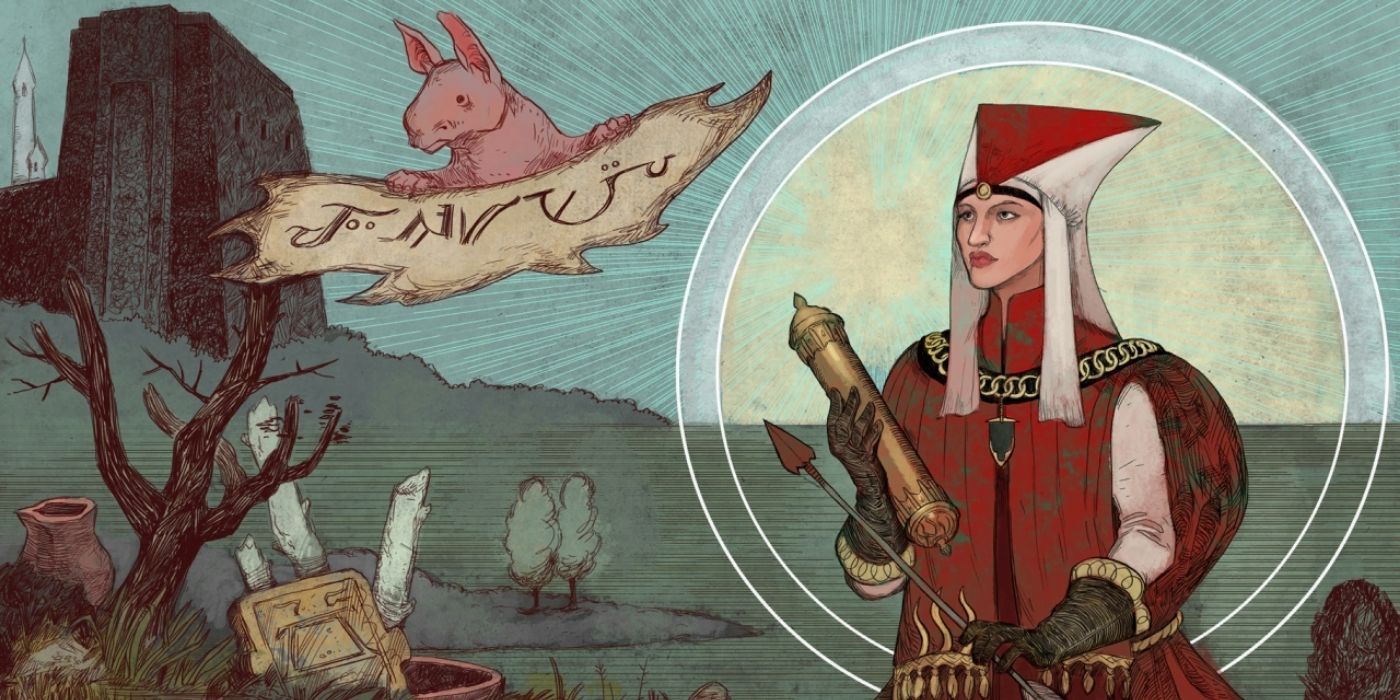Key Takeaways
- Dragon Age: The Veilguard doesn’t ask us who became Divine at the end of Inquisition.
- For the most part, the game writes around this, but there’s at least one contradiction that gets in the way of Leliana being Divine.
- In a codex entry, it’s suggested that mages are still controlled by the Chantry and the templars in the South, despite Leliana’s Divine ending doing away with that.
When it was revealed that Dragon Age: The Veilguard wouldn’t let us carry over most of our choices from previous games, many feared that some would be overridden. Instead, it was explained that because The Veilguard takes place in Northern Thedas, our choices just wouldn’t come up.
However, tucked away in a codex entry, it seems that one major decision from Dragon Age: Inquisition has been ignored: Leliana’s impact as Divine Victoria. In an entry titled “Different Flavors of Andraste”, Harding explains the difference between the Orlesian and Imperial Chantry, and it’s here that it’s suggested that Leliana’s grand reforms never took place.
Dragon Age: The Veilguard Walks Back On Chantry Reform
In this codex entry, Lace Harding gives a brief overview of how the Orlesian Chantry interacts with mages.
“In the South, the Templar Order is tasked with keeping mages in line, in accordance with the Chantry’s rules,” it reads, before continuing, “In the South, magic is seen as a curse, or a corrupting influence. Blood magic is forbidden.”
Now, this was largely true throughout the first three games, which is likely why it’s here. Mage oppression and conflict between templars aren’t much of a factor in the Veilguard, so this clues new players in on what we’d seen in previous entries. However, it ignores the fact that this might not have been true for a decade now.
If Leliana became Divine at the end of Inquisition, her ending slide mentions that she took drastic reforms, including abolishing the Circles. A replacement is set up, the College of Enchanters, but this is independent of the Chantry and pushes for increased freedom for mages. This happens regardless of who is Divine, but they have the best outcome with Leliana on the throne given that she is sympathetic towards mages.
So, while the codex entry might work in the cases that Cassandra and Vivienne became Divine (and even then, it would be a stretch since there’s still much change under their rules), it’s outright contradictory to Leliana taking up the role. This is likely unintentional since the game otherwise goes out of its way not to name who’s the head of the Orlesian Chantry, but it’s still an oversight.
Hell, if Leliana was romanced by a mage in the first game and then went on to become Divine, she’s still openly in a relationship with them. That doesn’t particularly line up with the Chantry apparently viewing magic as a “curse”.
For whatever reason, none of the choices we can import from Inquisiton relate to the Chantry. Instead, we’re asked who we romanced, whether or not we disbanded the Inquisition, and how we plan to deal with Solas. This means that some other decisions have been overwritten in The Veilguard, mostly related to companions being mentioned when not all of them had to be recruited.

Dragon Age: The Veilguard is the long-awaited fourth game in the fantasy RPG series from BioWare formerly known as Dragon Age: Dreadwolf. A direct sequel to Inquisition, it focuses on red lyrium and Solas, the aforementioned Dread Wolf.
Source link











Leave a Reply